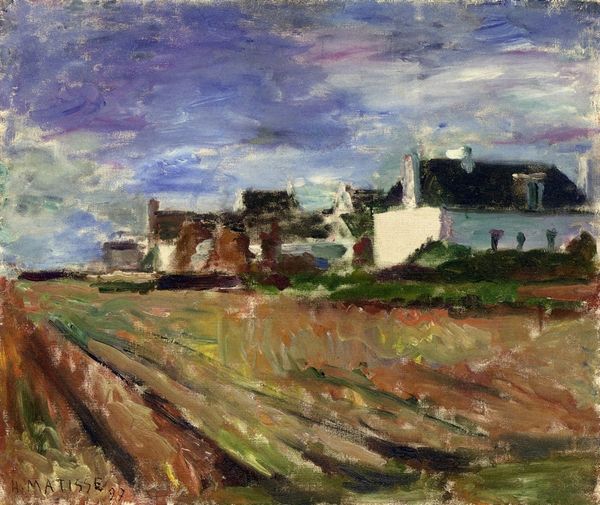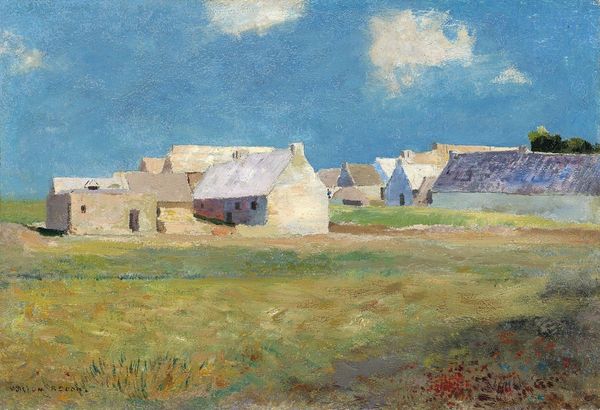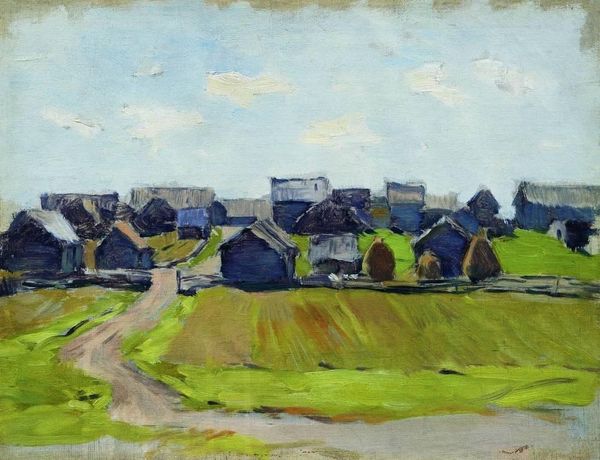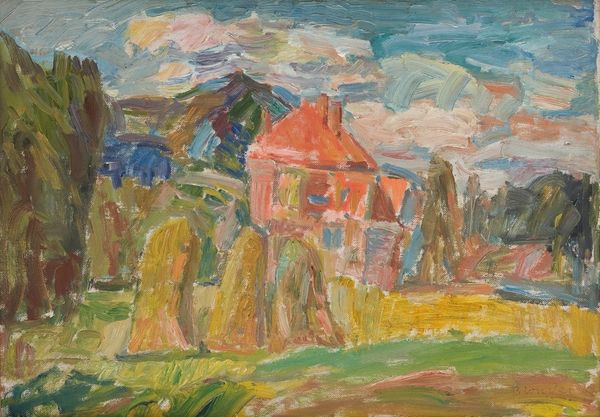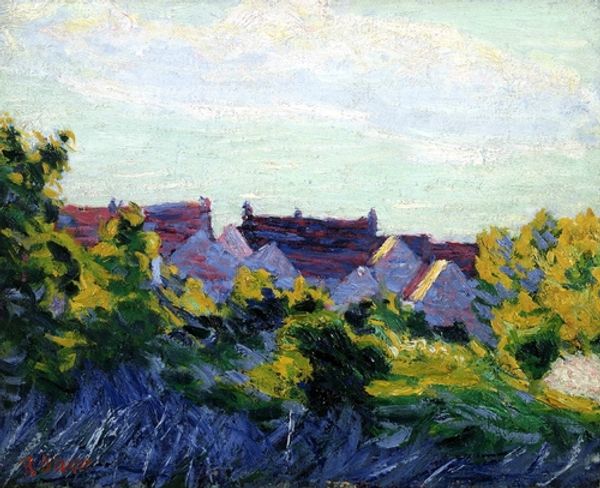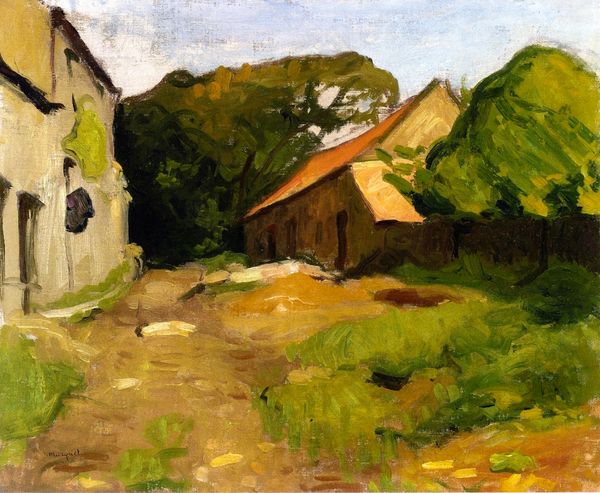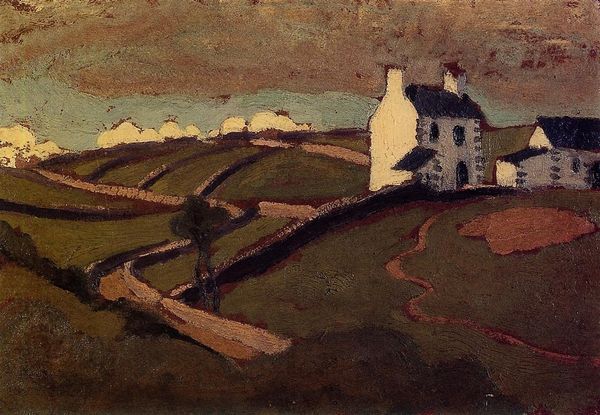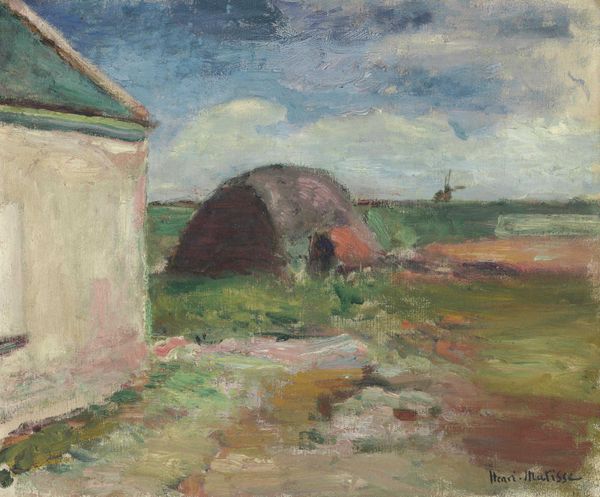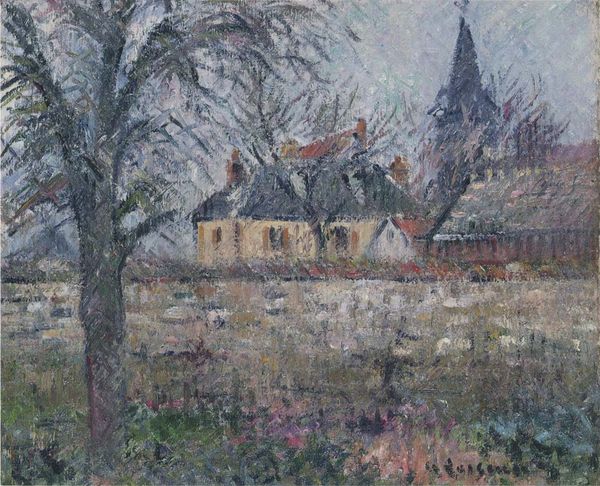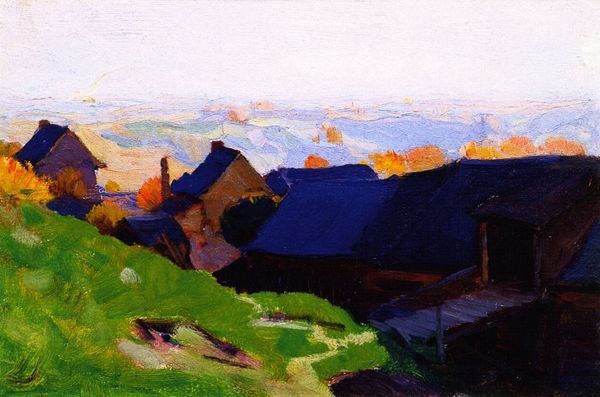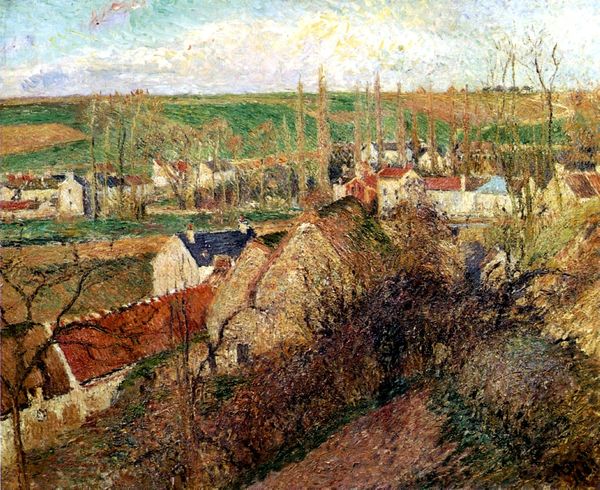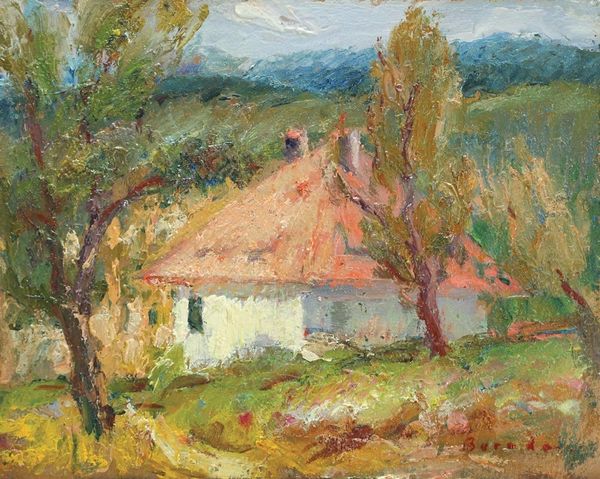
painting, oil-paint
#
painting
#
oil-paint
#
landscape
#
impressionist landscape
#
oil painting
#
cityscape
#
post-impressionism
Copyright: Public domain US
Curator: Before us hangs Henri Matisse's "Farmyard in Brittany," an oil painting created in 1897. What are your initial thoughts? Editor: Immediately, the somewhat muted palette and indistinct forms create a rather melancholic mood for me. There's a certain quietude to the scene, even with what appears to be the implication of activity, what I interpret as figures walking toward buildings or haystacks. It feels almost dreamlike, perhaps deliberately capturing the effects of fleeting memory or even a comment on society at the time. Curator: It's fascinating how the political climate invariably infuses into our perception. Indeed, this artwork reflects a transitional phase in Matisse's development. This work offers hints of Impressionism and Post-Impressionism through the brushstrokes and focus on light, it’s indicative of art institutions grappling with representation in late 19th-century France. Think about the pressures placed upon artists with the rise of photography, the need for them to respond accordingly. The artwork then stands as not merely a depiction but an active declaration of artistry in response to a technologically charged societal shift. Editor: And I do notice the hints of Post-Impressionism in that heavy application of paint. I would have been very curious to experience viewing this painting in a Parisian salon. Can we consider Matisse's personal experiences here? Does Brittany represent a sort of retreat, both physically and perhaps artistically, from urban modernity? Curator: Considering how Matisse moved within circles critical of rigid academic constraints of the art world and the impact of growing avant-garde ideas about formalism and subjectivity, the location becomes a conscious positioning. It certainly resonates with those looking for "authentic" experience outside of metropolitan influence; artists would leave for a more solitary and less politically entangled environment. Brittany also held certain historical significance tied to peasant resistance to centralized rule, making it laden with a socio-political symbolism connected with independence from authority. Editor: So you're proposing this farmyard is less about aesthetic ruralism and more a politically and artistically loaded site? A declaration of the avant-garde through both location and style. What is it you take from it today, viewing it as a modern audience member? Curator: Today, considering its painterly application and layered context, it acts as a document showing how art practices and the creation of art have adapted into modern interpretations of expression as artists were trying to navigate what representation means for social and individual narratives. Editor: I suppose then, seeing the world mediated and filtered. The dream of rural escape mixed with artistic intention.
Comments
No comments
Be the first to comment and join the conversation on the ultimate creative platform.

